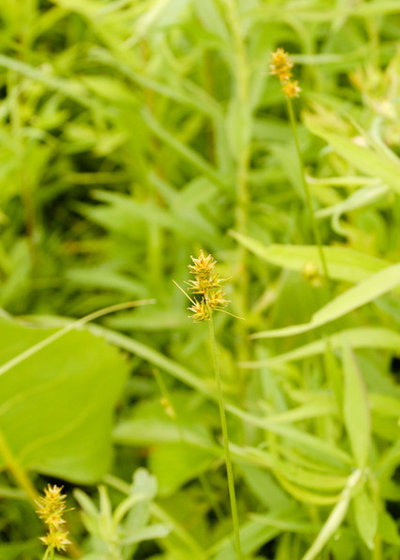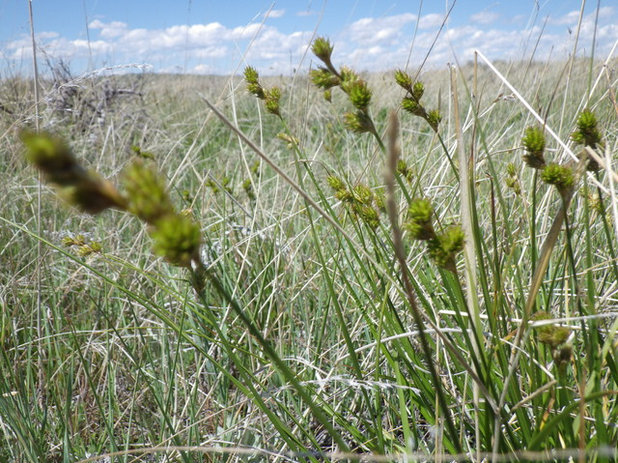If you have a low-traffic area where you want a low-care lawn alternative, try shortbeak sedge (
Carex brevior). If you want to add a base layer to your garden beds that works as a living mulch replacing wood mulch, try shortbeak sedge. If you want to support birds and skipper butterflies, well — you know. Shortbeak sedge.
North American native sedges tend to be incredibly adaptable and easy to grow, green early and late in the season, and reach more modest sizes than taller native grass species. Make no mistake though, sedges are not grasses, but their use as a lawn alternative — especially for troublesome sites on slopes, in ravines and under trees — is almost limitless.
 Botanical name: Carex breviorCommon names:
Botanical name: Carex breviorCommon names: Shortbeak sedge, plains oval sedge
Origin: Native to all states except South Carolina, Florida, Louisiana, Utah, Nevada and California
Where it will grow: Hardy to minus 40 degrees Fahrenheit, or minus 40 degrees Celsius (USDA zones 3 to 8; find your zone)
Water requirement: Once established, which happens fairly quickly, no supplemental water needed; prefers dry to moist soils
Light requirement: Full sun to 50 percent shade
Mature size: 12 inches tall and wide; plants may be anywhere from 2 to 4 feet tall while in bloom
Benefits and tolerances: Adaptable and resilient ground cover; erosion control; can grow in a variety of soil conditions; attracts wildlife
Seasonal interest: Early to green; blooms in late spring to midsummer, depending on region
When to plant: Plant potted or bare-root plants in spring to early fall; sow seeds in late fall through midwinter (seeds need 30 to 60 days of cold, wet conditions to germinate)
Photo by Frank Mayfield
 Distinguishing traits.
Distinguishing traits. Sedges differ from grasses in that their stems are triangular, whereas grass stems are hollow. “Sedges have edges” is a good phrase to remember. Sedges also tend to green up earlier in spring and have flushes of new green growth in fall.
Shortbeak sedge stands out from other native sedges because of its adaptability and low, mounding habit, making it a great lawn alternative for low to moderate foot traffic.
Photo by Matt Lavin
 How to use it.
How to use it. Shortbeak sedge is a workhorse in prairie, meadows, streamsides, ditches, open woods and disturbed areas. Its adaptability, while not uncommon among sedges, makes it a strong candidate for problem areas where typical lawn or native grasses won’t grow or are highly intensive to manage. Sedges and grasses provide nesting habitat and cover for many bird species, and their seeds are eaten by a variety of wildlife. Many skipper butterfly and moth species use this native sedge as a host plant.
Shortbeak sedge works well as a living mulch, allowing other perennials and forbs to grow freely between its airy, tufted mounds. Plant in drifts, clumps and masses among shorter perennials or in the front of a border.
Shortbeak sedge can be planted to prevent erosion, as sedges have fibrous root systems that hold soil in place. Their dead leaves, when submerged, help filter areas of standing water, meaning a stream, pond edge or rain garden would also be an effective place for shortbeak sedge.
Planting notes. Potted plants can go in the ground from spring to fall, while seeds should be sown on bare soil in late fall through midwinter; germination is improved by going through one to two months of cold, wet weather.
In a loamy soil with adequate moisture, shortbeak sedge may form a nice colony without being overly aggressive. In drier conditions, it will spread much more slowly — seed heavier or double up on the number of plugs you’re planting.
Photo by Frank Mayfield





